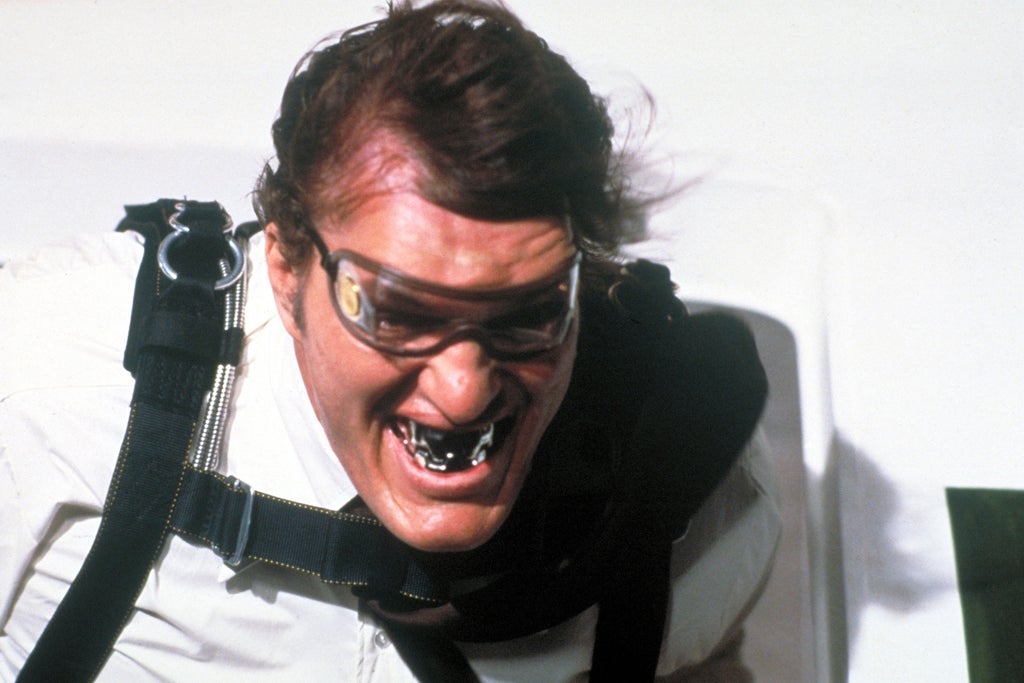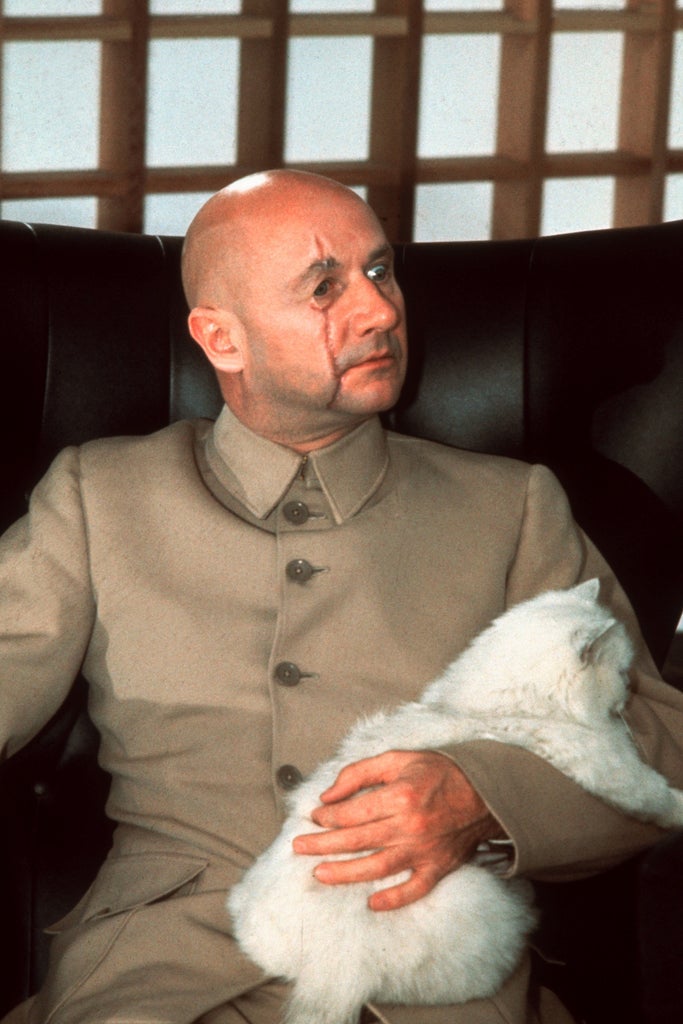Jen Campbell is a bestselling author and disability advocate. Her latest book, The Sister Who Ate Her Brothers, is a collection of gruesome fairy tales from around the world, containing positive representation of disability, disfigurement and queerness.
The producers of James Bond have been asked repeatedly why they continue to include villains with disfigurements and disabilities in the Bond franchise. This is known as the disfigurement-villainy trope: a shorthand way of showing the audience that a person is a ‘bad guy’. This visual difference often, though not always, takes the form of a facial disfigurement: Le Chiffre, Jaws, Oddjob (who had a cleft palate in the books and was mute in the films), Emilio Largo, Alec Trevelyan, Zao, Raoul Silva. In the latest Bond film, No Time To Die, which is out this week, we’re presented with two villains with facial disfigurements: the return of Christoph Waltz as Blofeld, and Rami Malek’s character, Safin.

In a 2012 interview, producer Michael G. Wilson stated: “It’s very much a Fleming device that he uses throughout the stories — the idea that physical deformity and personal deformity goes hand in hand in some of these villains. Sometimes it’s a motivating factor in their life, and what makes them the way they are.” The idea of the trope being a “Fleming device” – part of a writing tradition, so to speak – is a bit of a non-statement. Arguably a lot of classic literature relies on similar ‘traditions’ of racism, sexism and homophobia, too. Those are also boxes that Bond has been known to tick and, frankly, they can get in the bin.
Why does a villainous backstory heavily rely on disability and why doesn’t disability intersect with plot in more meaningful ways, in Bond films and beyond? Besides being offensive, it’s lazy and boring.
Those who are familiar with the Bond books may remember the term ‘semi-rape’, something the female narrator in The Spy Who Loved Me claimed all women love. In Casino Royale, Bond looks at Vesper Lynd and says: “He knew that … the conquest of her body, because of the central privacy in her, would have the sweet tang of rape.” The abuse and misogyny in Bond is something the producers have attempted to address in the films over the years, more recently by hiring Phoebe Waller-Bridge as a writer and by casting their first Black female agent 007, played by Lashana Lynch. However, the outdated depiction of disability and disfigurement remains the same. This was also the case with DC’s 2017 reboot of Wonder Woman: it had a female lead, yes, but the heroine was still scar-free and the villain, Dr Poison, was still someone with a facial disfigurement, who wore a mask to cover up part of her face.
THREAD
Every time a new James Bond film is made, the producers are asked to reconsider their representation of disfigurement. Every time, they say they don’t care. The new film, out this week, is no exception. This time, two villains with facial disfigurements. Lucky us. pic.twitter.com/94KhvZLdJw
— Jen Campbell (is mostly elsewhere) (@jenvcampbell) September 28, 2021
In a survey released this week by charity Changing Faces UK, which interviewed 1,000 people with visual differences, 74% of participants said they think that popular culture is changing to be more inclusive but that people with visual differences are being left behind. As the disfigurement-villainy trope is so embedded in our culture, and because we see it from such a young age, it’s something that many non-disabled people have the privilege of not noticing. I promise you, once you start paying attention to it, you will see that it’s everywhere.
It’s not just Bond. It’s Disney films and comic book villains, children’s novels, crime books and horror films. There’s the odd exception but it doesn’t add up to much. Horror film director Ari Aster openly admits that his disabled character, Ruben, in Midsommar is “more important as a symbol, as an idea, than he even is as a character.”
If films and books constantly depict villains as disabled or with visual differences, this further others disabled people and – subconsciously or otherwise – encourages fear and mocking of bodily difference.

Instead of moving away from this, in some classic reboots the villains are more disabled than they were before. In Disney’s 2016 version of The Jungle Book, Shere Khan has burns scars, while Warner Bros’ 2020 take on The Witches not only saw the witches with ectrodactyly (split hand malformation) as well as hair loss but also had Warner Bros release a short promo film on Instagram which broke the fourth wall, encouraging children to ‘witch hunt’ in real life and pay attention to women with missing fingers and hair loss because #WitchesAreReal. They later apologised for this but the point still stands: most filmmakers are not seriously considering the way they represent disfigurement and the harm it can cause.
Let me pause here to address the inevitable ‘it’s just a film’ comment. Plenty of research has been done regarding the influence of media on public perception. We’re not just talking about isolated incidents, we’re talking about an industry-wide, recognised issue in cinema, TV and publishing. Changing Faces UK launched its I Am Not Your Villain campaign in 2018, pushing for change and asking producers and writers to think more critically about their portrayal of disfigurement and disability.
Based on Changing Faces’ research and other research into the harmful effects of bad representation, the BFI released a statement saying that they would no longer fund films which use the disfigurement-villainy trope. It is very easy for non-disabled people to say that Bond is ‘just a film’ but I am all too aware of the lived realities of people’s prejudices, and if films and books constantly depict villains as disabled or with visual differences, this further others disabled people and – subconsciously or otherwise – encourages fear and mocking of bodily difference. As an author and disability advocate who not only exists in this world as a disabled person with disfigurements but also creates online content, abuse is not unfamiliar to me, both online and in everyday life, simply for looking the way I do. Abuse is not unfamiliar to others in the disabled community either, and with online disability hate crime rising 46% in 2019-20, we can and should do better.
In the most recent episode of The Graham Norton Show, which featured the main cast members of the new James Bond film, Norton said to Rami Malek: “Something we’ve noticed over the years is that Bond villains don’t have much luck when it comes to their complexions. Blofeld — that’s an unfortunate shaving accident [laughter], Jaws — poor dentistry [more laughter], Javier Bardem, I mean his whole face fell off [audience gasps]. But, now, what is wrong with you?” Malek dodged the question, saying it involved plot, so Norton pressed on, joking: “Is he allergic to detergent?” In a separate interview, Malek defended the writers’ decision to give his character disfigurements, saying: “We didn’t pick a mask off a wall willy-nilly. We had to think extremely specifically as to what would make the most sense.”

With online disability hate crime rising 46% in 2019-20, we can and should do better.
But why do villains only “make the most sense” when they have disfigurements? If we link this back to Michael G. Wilson’s statement about disability and disfigurement being a “motivating factor” in Bond villains’ lives, we can see clearly how the filmmakers excuse this representation. They argue that disabled people want revenge, that it’s something in their past that made them bitter, or that they fight a lot and therefore have injuries. However, they’re fighting the heroes, who very rarely have long-lasting injuries. Bond is said to have a small facial scar in the books but it’s not in the films, and that scar hardly compares to the injuries of his enemies anyway. Where is the nuanced storytelling? Why can’t they trust audiences to recognise ‘bad guys’ without these markers? Why does a villainous backstory heavily rely on disability and why doesn’t disability and disfigurement intersect with plot in more meaningful ways, in Bond films and beyond? Besides being offensive, it’s lazy and boring.
Regarding all this and the wider politics of James Bond, producer Barbara Broccoli said that she believes Bond films are “a parallel world … a heightened reality, and that’s where we feel very comfortable.”
To that, I want to ask: Barbara, who is “we”?
Like what you see? How about some more R29 goodness, right here?
How Disabled Women Are Gaslighted In The Workplace